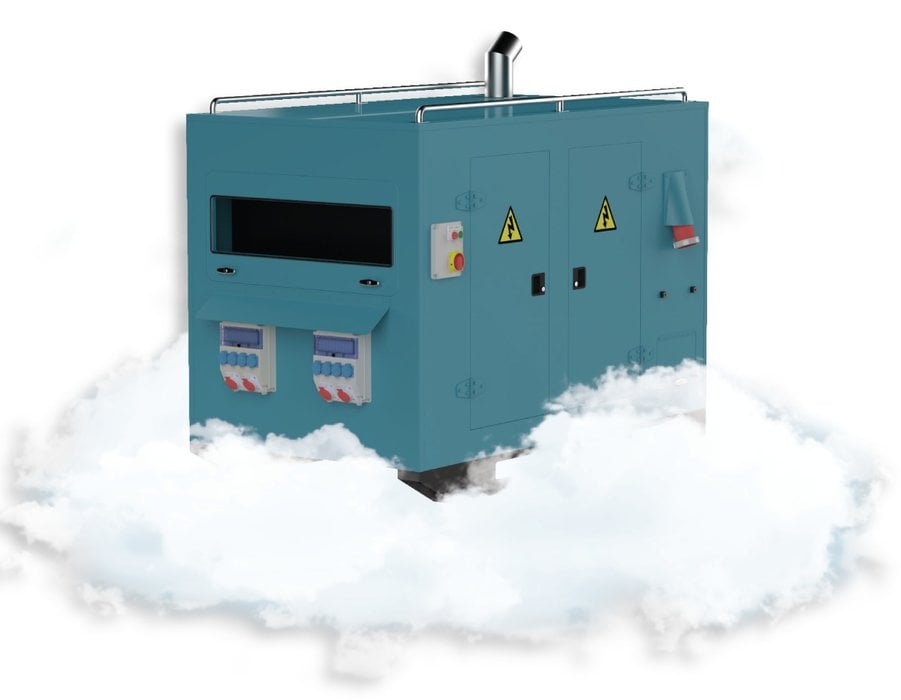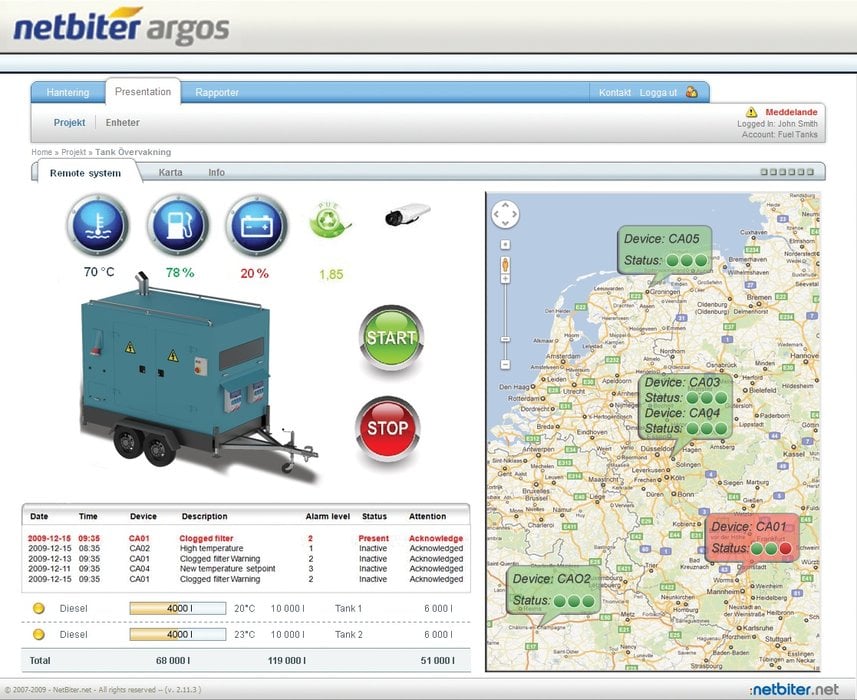www.industryemea.com
03
'13
Written on Modified on
Get your head out of the clouds!
Three ways to reduce maintenance costs of power generators through cloud-based remote management.

1) Perform service only when needed
Power generators are often serviced according to a pre-determined service schedule. By understanding how the generator has been operated, it is possible to plan service more dynamically. As site visits are costly, you are able to optimize the service costs by only sending service teams to generators that actually need service.
The challenge is to know when service is needed at each individual site. With a remote management solution, you can check operating hours, oil pressure, battery status, coolant temperatures, generated power output, fuel level, GPS position etc. A notification may also be generated whenever a critical level has been reached, for example if the generator has been running more than expected. We may then send a notification when the running hours exceed the service interval.
By being able to analyze the operation of each generator remotely, you will be able to understand their health and more efficiently schedule service visits in the field.
2) Test start generators remotely to reduce start-up problems
Just like a car that has been parked for an extended period, a generator engine that has not run in a long time is likely to have start-up problems. For back-up power generators that are not operated very often, it is important to regularly perform operational tests. Remote test starts can be made with a remote management solution that has control capabilities and is connected to the generator controller. With a simple action such as a remote operational test, you may increase the likelihood of the generator working the day there is a power outage and the generator needs to perform.
A well-maintained generator operates better and has lower operating costs since unplanned service visits often mean substantial expenses.
3) Minimize and reduce the effects of fuel theft
Fuel theft can be a significant problem. In certain regions, as much as 40% of genset fuel is reported to be stolen.
Avoiding fuel theft completely might be difficult since it is often stolen a bit at a time; during transportation, at fill-up, or at the power generator in the field. However, a remote monitoring system that connects to a fuel sensor can be used to ensure that the right amount of fuel is delivered at a refill. By using an intelligent level sensor, it is possible to track the fuel level of the tank. The fuel sensor can be calibrated to sense a full tank and by knowing this we can verify that the tank is properly refilled. A good fuel level sensor is able to detect variations down to 3-5 liters.
An abnormal decrease in content may be detected and indicate that the fuel is being stolen. With a remote monitoring system that supports alarms, a notification is sent immediately when the theft occurs. Even if it might be hard to catch the thieves, we are at least aware that the fuel has been stolen and we can schedule a refill to ensure the generators have the fuel needed to operate.
Tracking the level of fuel in a tank increases the awareness of what happens to the fuel on site and helps users understand when theft occurs. In some cases, where organized theft is common, this may help detect patterns and take action.
Remote monitoring puts you ahead of the game
Modern remote monitoring technology enables instant access to data from equipment in the field. While we are able to use this technology to reduce operating expenses as described above, it also brings us other benefits. By being able to have full control 24/7 and be instantly notified of any operational issues, the end-user also receives improved service quality.
How cloud-based remote management works
A communication gateway connects to the genset control panel, usually via serial communications or by using a popular open protocol such as Modbus RTU. The gateway sends data via the Internet or the mobile network (3G/GSM/GPRS) to an online data center in the cloud. Service engineers can access the data center through a regular web browser or smartphone and see live data from the power generators. This means that no IT expertise or programming is necessary. Alarms and notifications are sent whenever certain thresholds are reached.
So which solution should I choose?
There are a couple of different solutions for remote management of power generators available on the market. A few things to consider are that the solution should be able to send information via the mobile phone network since many power generators are placed in remote locations. It is important that the solution is “firewall friendly” so you don’t have to spend time on security issues and access rights.
Some remote management solutions, like the Netbiter remote management solution from HMS, have specialized solutions for power generators including pre-defined configurations for a range of for control panels from different manufacturers as well as built in features for fuel level management etc.
What are the costs involved?
You pay for the communication gateway which connects to the power generator. Most modern remote management solutions offer different service levels for cloud access. Free versions with basic functionality are often available offering a very quick return-on-investment.
No matter which solution you choose, the ROI will most likely be quick. A service visit is usually the same cost as a single remote management gateway meaning that you may have a payback time of only a few months.

Typical web dashboard from which a power generator can be monitored and even started or stopped remotely.

Henrik Arleving, Product Line Manager, HMS Industrial Networks presents three ways to reduce maintenance costs of power generators

